Autumn Sage Picture Gallery
Despite being called an Autumn Sage plant, Salvia greggii begins flowering in early summer, then continues blooming abundantly through autumn. It is an excellent choice for drought tolerant garden design and can handle heat well. Although Salvia greggii appreciates a bit of shade in extremely hot climates, it is accustomed open locations in full sun.
Salvia greggii are low maintenance subshrubs -- flowering perennial shrubs that combine woody growth with soft herbaceous foliage. They need well-drained soil and deep watering once a week if heat and drought are intense. During winter in areas with freezing temperatures, mulch them with a heavy blanket of leaves. Lots of Autumn Sages are hardy to 10 degrees F or less, and some survive the frigid chill of USDA Cold Hardiness Zone 5.
You can encourage profuse, repeated bloom and avoid overly woody growth and lankiness if you trim Salvia greggii back to about a third of its height at the end of winter, spring and summer.
-
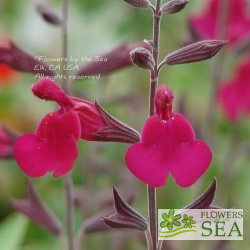
Salvia Raspberry Delight®
-
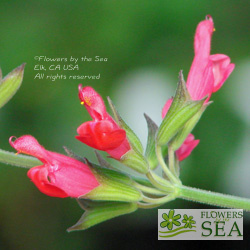
Salvia greggii x karwinskii 'Brent's'
-
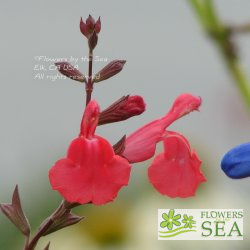
Salvia greggii 'Cherry Chief'
-
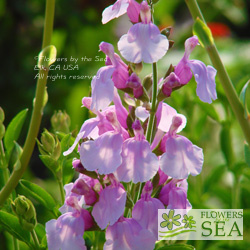
Salvia greggii 'Playa Rosa'
-
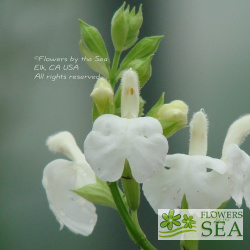
Salvia greggii 'Texas Wedding'
-
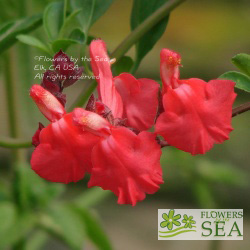
Salvia greggii 'Orange Yucca Do'
-
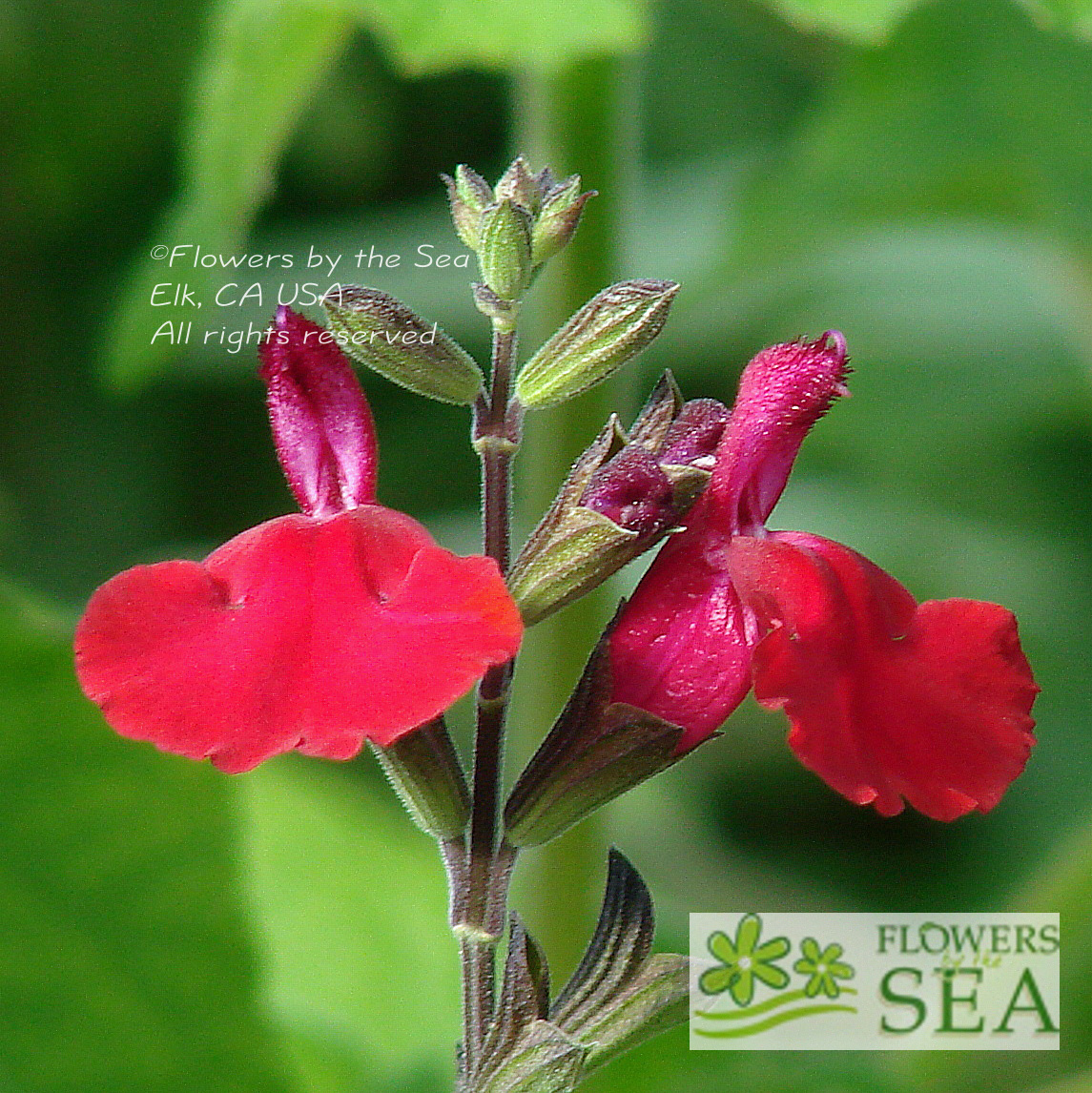
Salvia greggii x lemmonii 'Raspberry Royale'
-
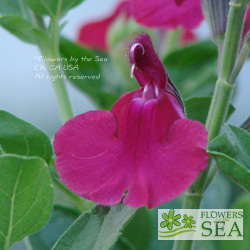
Salvia greggii 'Elk Pomegranate'
-
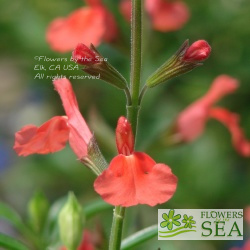
Salvia greggii 'Lowrey's Peach'
-
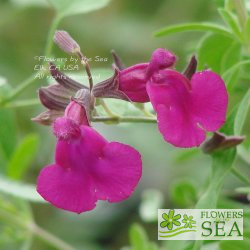
Salvia greggii 'Burgundy Seduction'
-
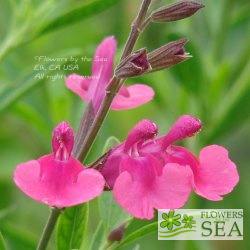
Salvia greggii 'Dark Dancer'
-
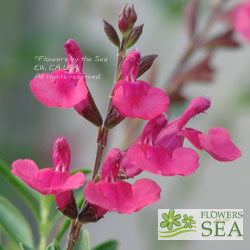
Salvia greggii 'Wild Thing'
-
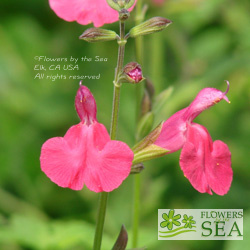
Salvia greggii 'Pink Preference'
-
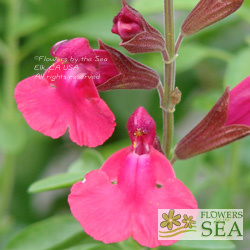
Salvia greggii 'Cold Hardy Pink'
-
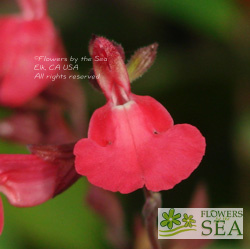
Salvia greggii 'Furman's Red'
-
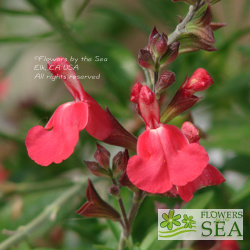
Salvia greggii 'Lipstick'
-
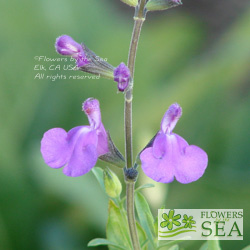
Salvia lycioides x greggii 'San Isidro'
-
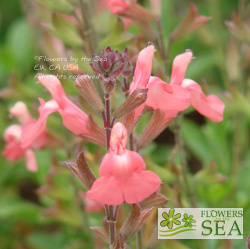
Salvia greggii 'Salmon'
-
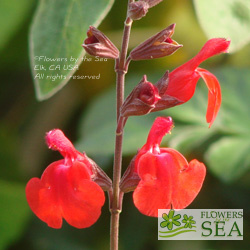
Salvia greggii 'Flame'
-
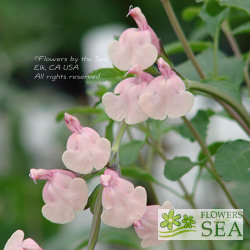
Salvia greggii 'Stormy Pink'
-
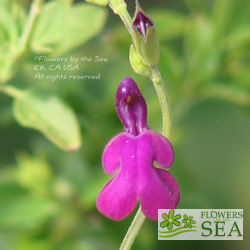
Salvia greggii 'Navajo Purple'
-

Salvia greggii 'Radio Red'
-
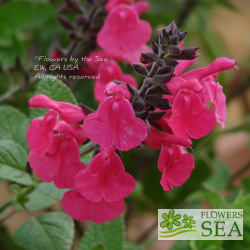
Salvia greggii 'Grace Pink'
-
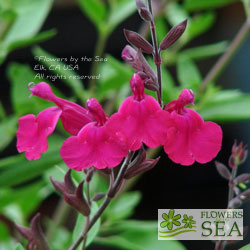
Salvia greggii 'Raspberry'
Related Blog entries for plants in the Autumn Sage Picture Gallery
Deadheading withered blossoms from deciduous woody stem Salvias like Autumn Sage makes them look tidy and repeat bloom during the growing season. A woody stem sage is a subshrub with partially woody growth.
July is a time of lush plant growth and pollinator activity in Salvia gardens. Aside from weeding and taking breaks to watch bees, hummingbirds and other small wildlife, there are many tasks to attend to in the sage garden during July. Flowers by the Sea Farm and Online Nursery offers a list of midsummer tasks to keep your garden buzzing and blooming.
Summer and fall pruning of Salvias requires only light trimming of spent blossoms, which is known as deadheading. It increases bloom for Autumn Sage (Salvia greggii) and Mountain Sage (Salvia microphylla), which are particularly abundant bloomers in autumn. In this video from Northern California's Flowers by the Sea farm, FBTS horticulturist and co-owner Kermit Carter shows how to use sharp hand pruners to quickly remove flower spikes that have gone to seed. Carter explains how flowering plants have less energy to put into blossoming if they are setting seed. Removal of spent blossoms improves a plant's appearance and makes continuous bloom possible. FBTS specializes in the Salvia genus, which contains about 1,000 species. This video is part of FBTS Everything Salvias Blog series Views from the Garden.
Without a doubt, this group of closely related plants are the most widely grown of the genus. From 'Hot Lips' to 'Texas Wedding', there is something here for everyone.
| Name | Mature height | Mature width | Flower color | Bract color | Exposure |
|---|---|---|---|---|---|
| Salvia Raspberry Delight® | 2 to 3 feet | 2 to 3 feet | Vivid Purplish Red | Dark Red | Full sun to partial shade |
| Salvia greggii x karwinskii 'Brent's' | 3 to 4 feet | 3 to 4 feet | Vivid Red | Dark Purple | Full sun |
| Salvia greggii 'Cherry Chief' | 2 to 3 feet | 2 to 3 feet | Vivid Red | Dark Purple | Full sun to partial shade |
| Salvia greggii 'Playa Rosa' | 1 to 2 feet | 1 to 2 feet | Pale Purplish Pink | Strong Yellowish Green | Full sun to partial shade |
| Salvia greggii 'Texas Wedding' | 1 to 2 feet | 1 to 2 feet | Pure White | Strong Yellowish Green | Full sun to partial shade |
| Salvia greggii 'Orange Yucca Do' | 3 to 4 feet | 3 to 4 feet | Deep Yellowish Pink | Dark Red | Full sun to partial shade |
| Salvia greggii x lemmonii 'Raspberry Royale' | 2 to 3 feet | 2 to 3 feet | Vivid Red | Dark Red | Full sun to partial shade |
| Salvia greggii 'Elk Pomegranate' | 1 to 2 feet | 1 to 2 feet | Deep Red | Strong Yellowish Green | Full sun to partial shade |
| Salvia greggii 'Lowrey's Peach' | 2 to 3 feet | 2 to 3 feet | Moderate Reddish Orange | Dark Red | Full sun to partial shade |
| Salvia greggii 'Burgundy Seduction' | 2 to 3 feet | 2 to 3 feet | Vivid Reddish Purple | Dark Red | Full sun to partial shade |
| Salvia greggii 'Dark Dancer' | 3 to 4 feet | 3 to 4 feet | Strong Purplish Red | Moderate Olive Green | Full sun to partial shade |
| Salvia greggii 'Wild Thing' | 2 to 3 feet | 2 to 3 feet | Vivid Purplish Red | Dark Red | Full sun to partial shade |
| Salvia greggii 'Pink Preference' | 1 to 2 feet | 1 to 2 feet | Vivid Red | Strong Yellowish Green | Full sun to partial shade |
| Salvia greggii 'Cold Hardy Pink' | 1 to 2 feet | 1 to 2 feet | Vivid Purplish Red | Dark Red | Full sun to partial shade |
| Salvia greggii 'Furman's Red' | 2 to 3 feet | 2 to 3 feet | Strong Red | Dark Red | Full sun to partial shade |
| Salvia greggii 'Lipstick' | 2 to 3 feet | 2 to 3 feet | Vivid Red | Strong Yellowish Green | Full sun to partial shade |
| Salvia lycioides x greggii 'San Isidro' | 1 foot or less | 1 foot or less | Vivid Purple | Dark Purple | Full sun |
| Salvia greggii 'Salmon' | 2 to 3 feet | 2 to 3 feet | Deep Yellowish Pink | Moderate Purplish Red | Full sun to partial shade |
| Salvia greggii 'Flame' | 2 to 3 feet | 2 to 3 feet | Vivid Red | Dark Red | Full sun to partial shade |
| Salvia greggii 'Stormy Pink' | 3 to 4 feet | 3 to 4 feet | Moderate Purplish Pink | Dark Red | Full sun to partial shade |
| Salvia greggii 'Navajo Purple' | 2 to 3 feet | 3 to 4 feet | Vivid Reddish Purple | Strong Yellowish Green | Full sun |
| Salvia greggii 'Radio Red' | 2 to 3 feet | 2 to 3 feet | Vivid Red | Dark Red | Full sun to partial shade |
| Salvia greggii 'Grace Pink' | 3 to 4 feet | 3 to 4 feet | Not yet defined * | Not yet defined * | Full sun to partial shade |
| Salvia greggii 'Raspberry' | 2 to 3 feet | 1 to 2 feet | Not yet defined * | Not yet defined * | Full sun to partial shade |
